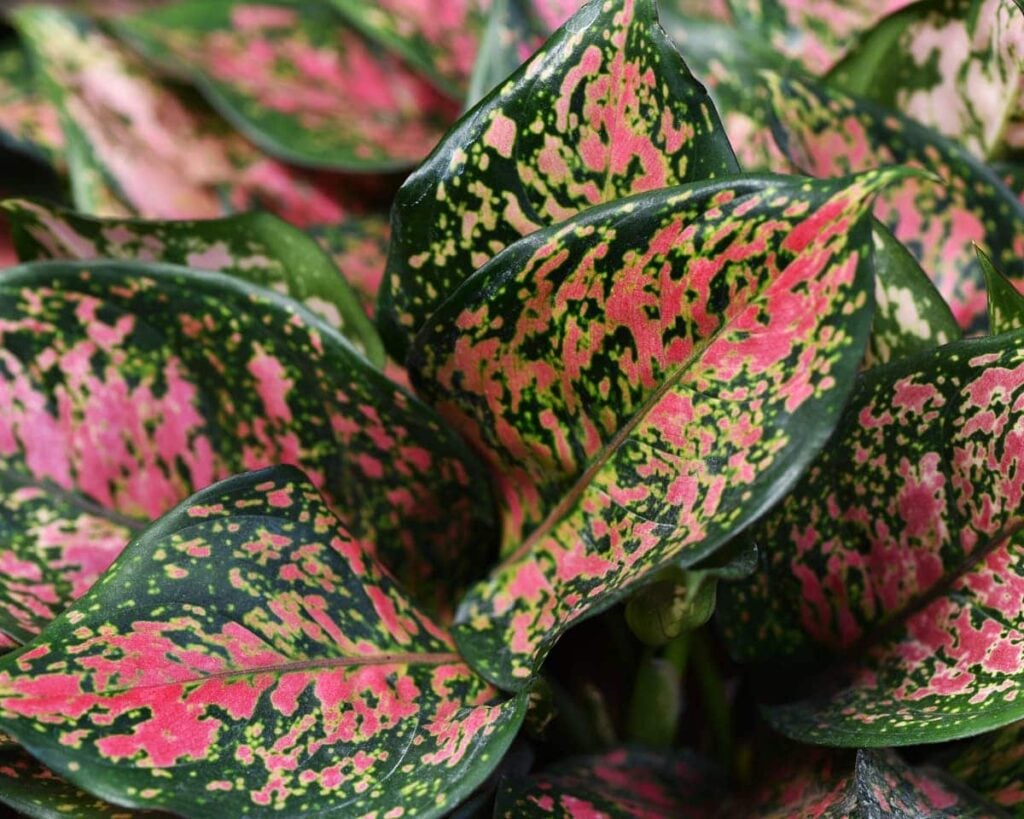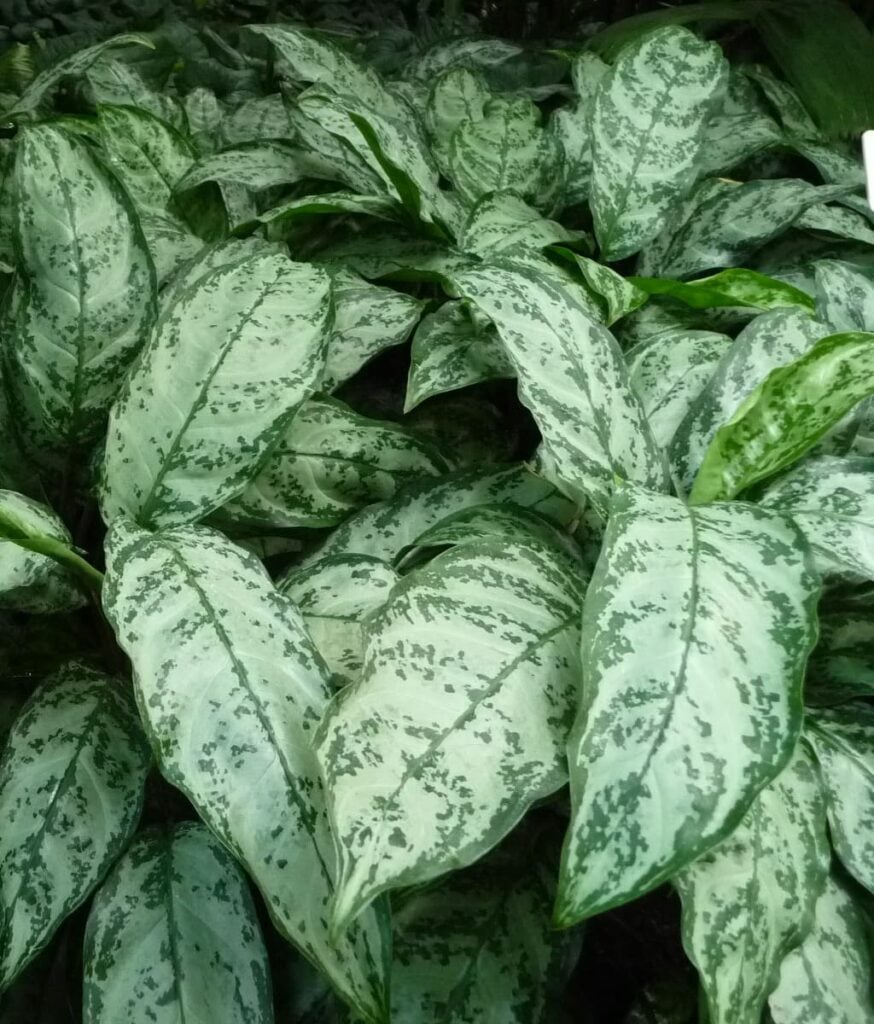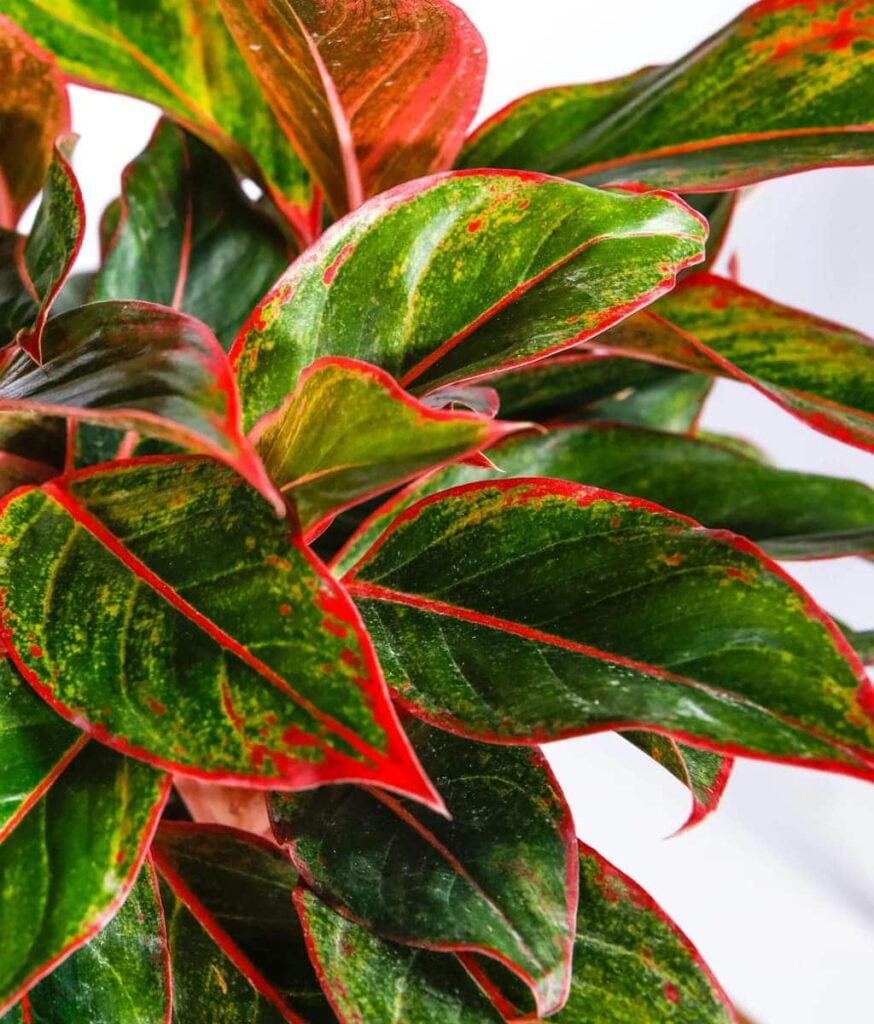Everything You Need to Know about Aglaonema Care

Aglaonema is a slow-growing, attractive, and make excellent foliage plants. They have large, narrow, and glossy oval leaves on short stems. Aglaonemas will produce flowers, these are not very showy, but they’re grown primarily for the attractive leathery leaves. Check out our aglaonema collection.
Aglaonema Care
Aglaonema care is very easy, best of all, it does not like full sun, so it is perfect for indoors, especially if window light is a commodity in your home. The Chinese evergreen is the common name used for a collection of plants from the Aglaonema genus which tend to tolerate low light conditions very well.
Light
The most common advice for the Aglaonema is the darker the leaves and stalks, the less light is needed. It would be safe to keep it in a bright room with the plant sitting in a shaded spot. Avoid direct sunlight; the darker green varieties of aglaonema can grow in near shade, while the variegated varieties require brighter light. Do not expose any variety of aglaonema to direct sun.
Soil
A peat based potting soil mixed with part perlite or sand to improve drainage is ideal or any other well draining potting mix. A lightly acidic potting soil is perfect for aglaonemas.
Water
Water it thoroughly in the summer and mist the plant often to raise the humidity. During the winter, reduce watering but do not let the plant dry out completely.

Temperature and Humidity
These plants do not like cold drafts or temperatures below 15 degrees Celsius, lower than that is not healthy for this plant and can cause dark patches on the leaves. Be sure to keep it away from drafty windows or vents and the warmer the spot you can find, the better. Temperatures between 18 degrees Celsius to 27 degrees Celsius are ideal. If the leaves begin to curl and the edges turn brown the temperature is probably too low or cold drafts may be affecting the plant. Due to its high humidity requirements, some growers consider aglaonema to be a greenhouse plant. It will do best in the warm, humid, and bright environment of a greenhouse, but it can be successfully grown indoors by coming as close as possible to these conditions. Average to high room humidity is needed. Increasing the humidity levels of a room, especially if the room has artificial heating, will improve the plants growth and prevent leaves from becoming dry and shrilling up.
Fertilizer
Feed your aglaonema with slow-release pellets or liquid fertilizer during the growing season. From spring until the end of summer they like to be fed with a diluted liquid fertilizer.

Common Problems
- Symptom: Root rot
Cause: Over watered - Symptom: Yellowing leaves, Browning tips on green leaves
Cause: Under watered, Copper deficiency - Symptom: Leaf spots
Cause: Fungal infection or mineral build up from tap water. Use distilled water and water directly into surrounding potting soil.
As you have read above the aglaonema care is not that hard and if you live in the humid parts of the country, you won’t have to do much for aglaonema care. But if you are in much hotter or cooler place, read this aglaonema care properly and get accustomed to it.
Aglaonema care reference: TheSpruce, HousePlantsExpert
